| Deities and Religion in Tarrastra |
Since the gods play a frequent and observable role, almost everybody in Tarrastra has a patron deity. They may be fickle or unobservant worshipers, but if pressed, most will name a favored god or goddess. Not only does having a patron make one's life easier in that you are plugged into the church of your faith and have a connection to the clergy and other worshipers, and can thus expect aid, including healing magic, more easily from your own church, but those who do not have a patron cannot be raised by any means short of divine intervention or by using a miracle or wish spell, which represents the equivalent level of attention.
Note that having a patron deity does not prevent you from making offerings to other deities, if you need to request their specific aid: making an offering to the god of the sea before going on a sea voyage is only prudent, and any farmer will offer to the goddess of agriculture, whether or not she is his patron.
In Tarrastra, the Celtic pantheon is dominant, at least among the more rural and agricultural folk. Outside of the cities, druids are common and standing stones and sacred druidic groves scatter the hills and forest glens. However, not all of the concerns of urban dwellers are well served by the Celtic deities, and various other deities have also gained followers.
Useful Links
Encyclopedia Mythica: Celtic Mythology
Very large collection of small articles on numerous deities and
heroes.
Celtic Deities of Britain, Wales, Gaul, and Scotland
(and surrounding areas)
Comprehensive set of articles on non-Irish Celtic deities.
Celtic Gods, Goddesses and Heroes
Only a handful of gods and goddesses so far, but very good history
from a neo-pagan viewpoint. Nice pictures.
Celtic Pantheon
D&D V3 rendition of the deities from the V2 Legends and Lore book,
with a few others.
Mythography:
Exploring Greek, Roman, and Celtic Mythology and Art
Very useful resource on the Gods and Heroes of Britain, Gaul, Ireland,
and Wales
Finnish Pantheon
Nice summary of the Finnish/Saami pantheon and mythological characters
Deities in Tarrastra
I used all of the above sources to come up with the following table, as well as the Forgotten Realms Campaign Setting and both the V1 and V3 editions of Deities and Demigods.
The D&D standard is that all deities grant the alignment domains of their own alignment components: Good, Evil, Law and Chaos.
The Divination and Madness domains are from Deities and Demigods.
The Suffering and Moon domains are from the Forgotten Realms Campaign Setting.
The Pain domain is from the Book of Vile Darkness.
Ilmatar and Loviatar are from the Finnish Pantheon.
Finally, although Cerridwen was associated with the Dark Moon, admirably fulfilling a need in Tarrastra, and is described as being the cognate of Hecate, she probably doesn't deserve to be CE, but that alignment also had a vacancy - and is symmetrical with the CG alignment of Arianrhod, the Bright Moon. Sorry, Cerridwen.
| Deity (Power Level) | Alignment | Domains | Favored Weapon | Symbol | Portfolio | Typical Worshipers |
|---|---|---|---|---|---|---|
| Arawn (I) | NE | Death, Evil, Healing, Magic | Greatclub | Skull with Warrior's Helmet | Life, Death | Necromancers, Jailers, Executioners |
| Arianrhod (I) | CG | Chaos, Good, Moon, Travel | Sling | Silver Wheel of Stars | Fertility, the Full Moon, the Stars, Regeneration, Reincarnation | Travelers, Lovers, Weavers |
| Belenus (I) | NG | Fire, Good, Plant, Sun | Scimitar | Standing Stones on Solar Disc | Sun, Fire | Druids, Fighters, Architects |
| Brigantia (I) | NG | Air, Animal, Good, Travel, Water | Shortspear | Footbridge | Rivers, Livestock | Merchants, Fishers, Farmers, Druids |
| Cerridwen (I) | CE | Chaos, Divination, Evil, Madness, Magic | Dart | White Sow | Evil Magic, Prophecy, the Dark Moon, Undead | Assassins, Evil Mages |
| The Dagda (G) | CG | Air, Chaos, Good, Plant, Trickery, Water | Scythe | Celtic Shield | Weather, Crops, Leaders | Farmers, Druids, Rangers, Chieftans |
| Dian Cécht (I) | LG | Good, Healing, Law, Plant, Protection | Mace | Leaf | Medicine, Healing | Healers, Physicians, Paladins |
| Dunatis (L) | N | Earth, Luck, Protection, Strength | Heavy Pick | Red Sun-capped Mountain Peak | Mountains | Climbers, Miners, Gnomes |
| Goibhniu (I) | NG | Earth, Good, Healing, Protection, Strength | Warhammer | Anvil | Brewing, Smithing, Healing | Craftsmen, Healers, Dwarves |
| Ilmatar (L) | LG | Air, Law, Good, Water | Shortbow | Looped Cross | Motherhood, the Seas, Weather | Mothers |
| Loviatar (L) | LE | Evil, Law, Pain, Retribution, Strength, Suffering | Scourge | Nine-tailed barbed scourge | Pain, Hurt, Agony, Torment, Suffering, Torture | Beguilers, torturers, evil warriors, the depraved |
| Lugh (I) | CN | Animal, Chaos, Luck, Travel, War | Greatspear & Sling | 8-Pointed Star | Arts, Crafts, Travel, Commerce, Horses, War, Excellence | Fighters, Bards, Any |
| Manannán mac Lir (I) | LN | Air, Animal, Law, Trickery, Water | Trident & Net | Stylized Fish | Oceans, Sea Creatures | Sailors, Fishers, Portsmen |
| Math Mathonwy (I) | NE | Destruction, Evil, Fire, Knowledge, Magic | Quarterstaff | Staff | Magic | Wizards, Sorcerers, Wizard Hunters |
| The Mórrigan (I) | CE | Chaos, Destruction, Evil, War | Greatsword | Sword Hilt | Battle, War | Barbarians, Evil Fighters |
| Núadu (G) | LN | Law, Protection, Strength, War | Bastard Sword | Silver Hand on Black | Warriors | Fighters, Paladins, Monks |
| Oghma (I) | NG | Good, Knowledge, Luck, Travel | Longsword | Celtic Chalice | Speech, Writing | Bards, Scribes, Scholars |
| Silvanus (G) | N | Animal, Earth, Plant, Sun | Quarterstaff or Sickle | Summer Oak Tree | Nature, Forests | Druids, Rangers, Woodsmen, Wood elves |
Deities by Alignment
| Lawful | Neutral | Chaotic | |
|---|---|---|---|
| Good | Dian Cécht Ilmatar | Belenus Brigantia Goibhniu Oghma |
Arianrhod The Dagda |
| Neutral | Manannán mac Lir Núadu | Dunatis Silvanus |
Lugh |
| Evil | Loviatar | Arawn Math Mathonwy |
Cerridwen The Mórrigan |
All of the deity holy symbols on this page are Copyright © 2004 by Eden Celeste * All rights reserved.
Arawn (intermediate god)
 The Dark One
The Dark One
Arawn is the god of death and the underworld. His home is an island so far out at sea that no one except the dead can find it. He sometimes intervenes when somebody is resurrected that he would rather keep.
His avatar appears as a normal man in black robes with very dark and deep set features.
Symbol: Skull with Warrior's Helmet
Alignment: Neutral Evil
Portfolio: Life, death
Domains: Death, Evil, Healing, Magic
Favored Weapon: Greatclub
Priests of Arawn officiate at only one religious function: burial. They do not officiate at sacrifices for other gods but are generally on hand for ceremonies of their own following such events.
<Time of day that clerics pray for spells. Well-known holy days. Most common multi-classing options for clerics.>
History/Relationships:
Dogma:
Arianrhod (intermediate goddess)

Silver Wheel
Arianrhod (aree AN rod), whose name means "Silver Wheel", is a Goddess of fertility, the full moon, the stars, regeneration, and reincarnation, whose pathway is an eternal quest or thread that has no beginning or end. She is the personification of the ever-turning Wheel of the Year. She is ruler of Caer Sidi, a magical realm in the north. This benevolent silver sky-lady comes down from her pale white chariot in the heavens to watch more closely over the tides she ruled.
Symbol: Silver Wheel of Stars
Alignment: Chaotic Good
Portfolio: Shining moon
Domains: Chaos, Good, Moon, Travel
Favored Weapon: Sling
Duties of priestesses
<Time of day that clerics pray for spells. Well-known holy days. Most common multi-classing options for clerics.>
History/Relationships:
Dogma:
Belenus (intermediate god)
 Belenus is the god of the sun and of fire and is a patron of the
druids. He has the power to control the heat and light from fires and
the sun, bringing them into focus to destroy or blocking them to freeze,
as he desires.
Belenus is the god of the sun and of fire and is a patron of the
druids. He has the power to control the heat and light from fires and
the sun, bringing them into focus to destroy or blocking them to freeze,
as he desires.
Belenus encourages the construction of standing stones to measure the progress of his sun and sacred groves where druids may meet and build great bonfires to him.
His avatar appears as a strong younf man with curled black hair and a terrific shining torc around his neck.
Symbol: Standing Stones on Solar Disc
Alignment: Neutral Good
Portfolio: Sun, fire
Domains: Fire, Good, Plant, Sun
Favored Weapon: Scimitar
Priests of Belenus must be druids. At least once in their lives they must take part in the construction of a stone structure in honor of their god and his sun. This usually takes at least a year. Meetings with other druids must take place in designated groves around enormous fires. Wandering druids must tend to forest fires, ensuring that they occur in sufficient quantity to renew portions of the woods, but not so frequently that they devestate it.
Clerics and druids of Belenus prepare spells at high noon, when his sun is at its peak.
<Well-known holy days. Most common multi-classing options for clerics.>
History/Relationships:
Dogma:
Brigantia (intermediate goddess)
 Brigantia is the goddess of rivers and rural life. She was raised on the
milk of a creature of the otherworld, a white, red-eared cow. She is
commonly worshiped in pastoral villages and towns. She protects flocks
of geese and herds of cattle, seeing that they flourish to feed her
worshipers.
Brigantia is the goddess of rivers and rural life. She was raised on the
milk of a creature of the otherworld, a white, red-eared cow. She is
commonly worshiped in pastoral villages and towns. She protects flocks
of geese and herds of cattle, seeing that they flourish to feed her
worshipers.
Her avatar appears as a beautiful youngwoman, either tending flocks, or crowned, wearing a breastplate, and carrying a spear.
Symbol: Footbridge
Alignment: Neutral Good
Portfolio: Rivers, livestock
Domains: Air, Animal, Good, Travel, Water
Favored Weapon: Shortspear
Priests of Brigantia must spread her bounty across the land and are often seen carrying two clay jars. One contains water from a Brigantian river or stream, which the priest can pour into other streams to cleanse them. The other contains dung from her pastoral lands, which, when distributed, brings her vessels upon fields and villages. The priests can also apply these items to heal the sick or injured.
<Time of day that clerics pray for spells. Well-known holy days. Most common multi-classing options for clerics.>
History/Relationships:
Dogma:
Cerridwen (intermediate goddess)
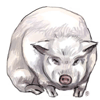
Cerridwen [KARE-id-ooín or KARE-id-win] is the white-corpse eating sow representing the Moon. Wife of the giant Tegid and mother of a beautiful girl Creirwy and two ugly boys Avagdu and Movran. Welsh Bards called themselves Cerddorion (sons of Cerridwen). The Bard Taliesin, founder of their craft was said to be born of Cerridwen and to have tasted a potent brew from her magic cauldron of inspiration. This potion known as 'greal' (from which to word Grail probably came), was made from six plants for inspiration and knowledge. Gwion Bach (later called Taliesin) accidentally drank the remaining three drops of the liquid. Her symbol was a white sow. Death, fertility, regeneration, inspiration, magic, astrology, herbs, science, poetry, spells, knowledge.
Cerridwen is the goddess of dark prophetic powers. She is the keeper of the cauldron of the underworld, in which inspiration and divine knowledge are brewed. She is often equated with the famous Greek crone, Hecate, and to the Irish Badb. She is also sometimes related to the Greek Muses, only in a more violent and dark form.
Symbol: White Sow
Alignment: Chaotic Evil
Portfolio: Evil Magic, Prophecy, the Dark Moon, Undead
Domains: Chaos, Divination, Evil, Madness, Magic
Favored Weapon: Dart
Duties of priests
<Time of day that clerics pray for spells. Well-known holy days. Most common multi-classing options for clerics.>
History/Relationships:
Dogma:
The Dagda (greater god)
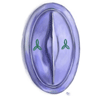
The Dagda enjoys a position of leadership among the loose confederation of Celtic gods. His powers are widely varied, but he is credited with control over weather and crops. His great cauldron is a bottomless receptacle filled with food and drink and the abundance of the Celtic otherworld: there is virtually nothing that he cannot pull out of it.
He is the custodian of the gods and all the Celtic people, using his charms and powers to protect them whenever he can. As a warrior, he is a great leader and scout. As a father figure, he is both stern and fun-loving, enjoying being a comical figure of great power.
His avatar appears as a tall man who is dressed comically, with a very short tunic and uncouth behavior.
Symbol: Celtic Shield
Alignment: Chaotic Good
Portfolio: Weather, crops, leaders
Domains: Air, Chaos, Good, Plant, Trickery, Water
Favored Weapon: Scythe
Priests of the Dagda must be druids. They are expected to dress in an unorthodox manner in order to call attention to themselves. They raise great standing stones with which they keep track of the seasons and through which they can focus their magical powers. They generally keep to themselves, gathering only to perform important ceremonies.
<Time of day that clerics pray for spells. Well-known holy days. Most common multi-classing options for clerics.>
History/Relationships:
Dogma:
Dian Cécht (intermediate god)

Symbol: Leaf
Alignment: Lawful Good
Portfolio: Medicine, healing
Domains: Good, Healing, Law, Plant, Protection
Favored Weapon: Mace
<Time of day that clerics pray for spells. Well-known holy days. Most common multi-classing options for clerics.>
History/Relationships:
Dogma:
Dunatis (lesser god)

Dunatis is the god of mountains and peaks. He always appears as a normal man. he has the power to raise a mountain peak from a flat plain or flatten a giant mountain into a prairie. This is done instantaneously and was often done to destroy forts and the like.
Symbol: Red Sun-capped Mountain Peak
Alignment: Neutral
Portfolio: Mountains
Domains: Earth, Luck, Protection, Strength
Favored Weapon: Heavy Pick
<Time of day that clerics pray for spells. Well-known holy days. Most common multi-classing options for clerics.>
History/Relationships:
Dogma:
Goibhniu (intermediate god)
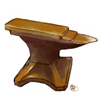 Blacksmith of the gods
Blacksmith of the gods
Symbol: Anvil
Alignment: Neutral Good
Portfolio: Brewing, smithing, healing
Domains: Earth, Good, Healing, Protection, Strength
Favored Weapon: Warhammer
<Time of day that clerics pray for spells. Well-known holy days. Most common multi-classing options for clerics.>
History/Relationships:
Dogma:
Ilmatar (lesser goddess)
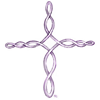
In Finnish mythology, Ilmatar was impregnated by the winds and gave birth to the earth and stars, as well as to Vainamoinen, the first bard and sorcerer
Symbol: Looped Cross
Alignment: Lawful Good
Portfolio: Motherhood, the seas, weather
Domains: Earth, Air, Law, Good, Water
Favored Weapon: Shortbow
<Time of day that clerics pray for spells. Well-known holy days. Most common multi-classing options for clerics.>
History/Relationships:
Dogma:
Loviatar (lesser goddess)
 Maiden of Pain, the Willing Whip
Maiden of Pain, the Willing Whip
Symbol: Nine-tailed barbed scourge
Alignment: Lawful Evil
Portfolio: Pain, hurt, agony, torment, suffering, torture
Domains: Evil, Law, Pain, Retribution, Strength, Suffering
Favored Weapon: Scourge
Loviatar is the aggressive, domineering and fearless patron of torturers, sadists, and bullies. She is cold and calculatingly cruel and has an ice-bound heart. The Maiden of Pain has an instinct for inflicting both physical and psychological pain, always striking for the biggest chink in her victim's emotional armor. She does not feel pain herself, but her plans often inherently rely on the innate selfishness of human nature.
The church of Loviatar is dominated by female humans (and half-elves) and is strongest in large, decadent cities where newcomers are recruited from the ranks of the bored and wealthy and authorities are often tolerant of degenerate activity.
Her clerics work tirelessly to cause suffering, both widespread and personal. This may be as brutal as flogging a band of orcs until they flee or as subtle as breaking hearts among young nobles by pretending to fall in love with the young gallants, working to break up existing amours and friendships, and engaging an scandalous dalliances before coldly spurning the victims and departing.
Clerics of Loviatar pray for their spells in the morning while kneeling after striking themselves with a whip. (The same ritual is performed in the evening, although without praying for new spells.)
Loviatans celebrate all four seasonal festivals with the Rite of Pain and Purity. Every twelfth day (unless such a night coincides with the Rite of Pain and Purity, which preempts it), the clergy celebrate a Candle Rite.
Many clerics multiclass as fighters, specializing in the use of the whip, as sorcerers, or as wizards, often specializing in illusion or enchantment.
History/Relationships:
As a member of the Finnish pantheon, Loviatar has little connection with the predominantly Celtic deities of Tarrastra.
Dogma:
The world is filled with pain and torment, and the best that one can do
is suffer those blows which cannot be avoided and deal as much pain back
to those who offend. Kindnesses are the best companions of hurts, and
increase the intensity of suffering. Let mercy of sudden abstinence from
causing pain and of providing unlooked-for healing come to you seldom,
but at whim, so as to make folks hope and increase the Mystery of
Loviatar's Mercy. Unswerving cruelty will turn folks against you. Act
alluring, and give pain and torment to those who enjoy it as well as to
those who deserve it or would be most hurt by it. The lash, fire, and
cold are the three pains that never fail the devout. Spread Loviatar's
teachings wherever punishment is meted out. Pain tests all, but gives
strength of spirit and true pleasure to the hardy and the true. There is
no true punishment if the punisher knows no discipline. Wherever a whip
is, there is Loviatar. Fear her—and yet long for her.
Lugh (intermediate god)
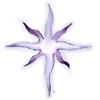 The Shining One.
The Shining One.
Lugh is the Celtic lord of every skill. He was patron of Lugodunum (Lyons) in Gaul. He and his nature goddess consort (Rosmerta) were worshipped during the 30 day Lugnasad midsummer feast in Ireland. Fertility magic during this festival ensured ripening of the crops and good harvest. He was called Lamfhada or 'of the long arm' in Gaelic because of his great spear and sling. His animal attributes were the raven and the lynx. Lugh mirrors Hindu Karttikeya, the spiritual warrior, and Roman Mercury, the swift messenger. His exploits are recounted in the "Tain Bo Cuailnge", the Cattle-raid of Cooley.
Symbol: Eight-pointed star
Alignment: Chaotic Neutral
Portfolio: Arts, crafts, travel, commerce, war, horsemanship
Domains: Animal, Chaos, Luck, Travel, War
Favored Weapon: Greatspear and Sling
Lugh is the god of excellence. He is not only the inventor and patron of the arts, but is also an expert in sorcery, history, craftsmanship, story telling, and heroism. He can control endeavors in the arts and crafts with which he is familiar, and can control or influence all forms of travel and commerce. A wanderer in the lands of his worshipers, consorting with various goddesses of the lands that he meets, Lugh is a self-confident god, eager to keep his hand in mundane matters. He keeps an eye out for fair play in mortal matters.
Priests of Lugh must be highly skilled in the arts and must be well travelled. They must also erect mounds to Lugh, or hold their ceremonies atop low hills or other summits.
<Time of day that clerics pray for spells. Well-known holy days. Most common multi-classing options for clerics.>
History/Relationships:
A latecomer in the pantheon, Lugh is often found in the company of Rosmerta, goddess of wealth and material possessions.
Dogma:
Manannán mac Lir (intermediate god)

...
Symbol: Stylized Fish
Alignment: Lawful Neutral
Portfolio: Oceans, sea creatures
Domains: Air, Animal, Law, Trickery, Water
Favored Weapon: Trident & Net
<Time of day that clerics pray for spells. Well-known holy days. Most common multi-classing options for clerics.>
History/Relationships:
Dogma:
Math Mathonwy (intermediate god)

...
Symbol: Staff
Alignment: Neutral Evil
Portfolio: Magic
Domains: Destruction, Evil, Fire, Knowledge, Magic
Favored Weapon: Quarterstaff
<Time of day that clerics pray for spells. Well-known holy days. Most common multi-classing options for clerics.>
History/Relationships:
Dogma:
The Mórrigan (intermediate goddess)
 ...
...
Symbol: Sword Hilt
Alignment: Chaotic Evil
Portfolio: Battle, war
Domains: Chaos, Destruction, Evil, War
Favored Weapon: Greatsword
<Time of day that clerics pray for spells. Well-known holy days. Most common multi-classing options for clerics.>
History/Relationships:
Dogma:
Núadu (greater god)
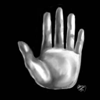 God of the Silver Hand
God of the Silver Hand
The first leader of the Tuatha De Danaan, Núadu appears as a man with an artificial silver hand, created for him by Dian Cécht.
Symbol: Silver Hand on a Black Background
Alignment: Lawful Neutral
Portfolio: Warriors
Domains: Law, Protection, Strength, War
Favored Weapon: Bastard Sword
<Time of day that clerics pray for spells. Well-known holy days. Most common multi-classing options for clerics.>
History/Relationships:
Dogma:
Oghma (intermediate god)
 The Binder, Grianainech, "he of the sun-like countanence"
The Binder, Grianainech, "he of the sun-like countanence"
Symbol: Celtic Chalice
Alignment: Neutral Good
Portfolio: Speech, writing
Domains: Good, Knowledge, Luck, Travel
Favored Weapon: Longsword
<Time of day that clerics pray for spells. Well-known holy days. Most common multi-classing options for clerics.>
History/Relationships:
Dogma:
Silvanus (greater god)
 God of the Silver Hand
God of the Silver Hand
Silvanus looks like a man with very long legs.
Symbol: Summer Oak Tree
Alignment: Neutral
Portfolio: Nature, forests
Domains: Animal, Earth, Plant, Sun
Favored Weapon: Quarterstaff or Sickle
<Time of day that clerics pray for spells. Well-known holy days. Most common multi-classing options for clerics.>
History/Relationships:
Dogma: